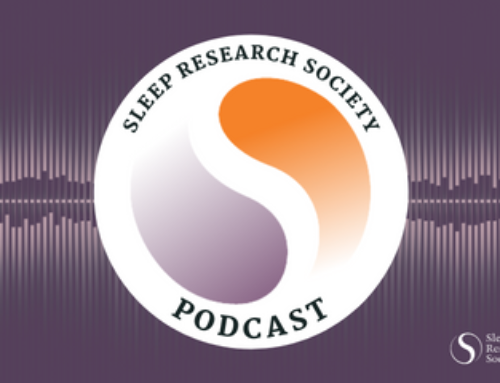Dear SRS Members,
In my last blog I reviewed the recent process we undertook for revising the plan and highlighted a few key changes. Because of the great importance of the strategic plan I am devoting a number of my blogs to providing information about the revised plan. In this blog I would like to present the revised plan to you in detail. In the next blog I will review priorities for implementation in the coming year.
The overall structure for our revised plan did not change from the preexisting plan. This structure begins with the formulation of a Mission Statement for the Organization and an accompanying “Central Challenge”. This is followed by identifying a set of “Strategic Priorities” for the Society that are driven by the Mission and Central Challenge each of which includes a set of “Strategic Objectives” that are to be achieved in order to advance that “Strategic Priority”. Lastly, a set of cross-cutting Priorities are identified that are relevant for all of the “Strategic Priorities” and are intended to be considered in all of the planning for meeting all of the “Strategic Objectives”.
A graphical representation of this structure is included below:

As I describe below, the revision of our Plan represents a fine-tuning of the existing plan and not a drastic change. The Mission Statement for our Society remains unchanged from the previous Strategic Plan: “The Sleep Research Society advances sleep and circadian science”. The Central Challenge was modified from “Build a Robust Excellent Sleep Research Community” to “Build a Robust, Diverse, Engaged, Sleep and Circadian Research Community”. The changes in the Central Challenge were instituted to highlight our focus on diversity, to prioritize working towards greater engagement of our membership and to explicitly acknowledge circadian science as within our purview. As can be seen in the figure below, the Revised Strategic Plan includes a set of very minor modifications to the Strategic Priorities. Only Strategic Priorities A, C, and E were modified:
- Strategic Priority A was changed from: “Strengthen Membership Recruitment and Engagement” to “Strengthen Membership Recruitment, Engagement, and Retention”. The purpose of this change speaks for itself.
- Strategic Priority B remains unchanged: “Maximize Impact of Advocacy and Outreach”
- Strategic Priority C was changed from “Enhance the Vibrancy of Scientific Offerings” to “Enhance the Vibrancy and Breadth of Scientific Offerings” to highlight prioritizing diversifying scientific content.
- Strategic Priority D remains: “Strengthen the Quality of Career Development Programs and Services”.
- Strategic Priority E was changed from “Increase Resources to Achieve Goals” to “Increase and Sustain Resources to Achieve Goals”. This change is meant to highlight the need for a long-term strategy for fundraising that seeks sustain the relatively elevated level of fundraising we have achieved with our recent fundraising campaign.
In addition, there remains 2 cross-cutting Strategic Priorities. One of these is unchanged: “Increase Organizational Effectiveness and Adaptability”. The second was modified from “Develop Strategic Partnerships” to “Develop Strategic Partnerships Nationally and Internationally”. This change reflects an appreciation of the value to our society of engaging with Sleep and Circadian groups around the world and the benefit of considering opportunities for this when working on many of our Strategic Priorities.
Changes to the Strategic Objectives reflect combining Objectives to make the Plan more concise, refining existing Strategic Objectives, as well as adding a small number of new Strategic Objectives.
- Strategic Objectives for Strategic Priority A – Strengthen Membership Recruitment, Engagement, and Retention were changed in the following ways:
- The Objective “Determine Benefits the SRS Needs to Provide to Maximize Membership Value” was changed to: “Provide Benefits that Maximize Membership Value Year-Round”. This change was intended to draw attention to the need to address the problem that primary value of membership is perceived by many to be limited to events, such as the annual meeting, but are not sustained year-round.
- The Objective “Determine Optimal Communication Strategies and Tools” was changed to “Optimize Communication and Transparency to Members”. This change reflects the perception that there is a need to increase transparency of the activities of the Society Leadership.
- The following Objectives were removed: “Give Members a Greater Sense of Ownership in the Society”, “Find Ways to Recognize Members’ Contributions and Excellence”, “Implement Strategies to Engage Non-Member Sleep Research Community”. These were removed because of a sense that they are being covered by other Strategic Objectives, are being addressed by ongoing activities, or are no longer perceived as among our top priorities.
- Two Strategic Objectives were added under Strategic Priority A to reflect our heightened commitment to diversity. These Objectives are: “Expand Recruitment to a More Diverse Set of Members”, “Engage a More Diverse Set of Members in Society Leadership and Programs”.
- Strategic Objectives for Strategic Priority B – “Maximize Impact of Advocacy and Outreach” were changed in the following ways:
- Four Strategic Objectives were combined into two Objectives to decrease redundancy and increase focus on priority objectives. Those combined include: “Maintain a Washington DC Lobbying Presence”, “Engage NIH Frequently Regarding Research Priorities”, “Expand Outreach to Other Funding Agencies/Sources”, “Explore International Funding Sources”. These were replaced with: “Sustain Intensive and Frequent Engagement with Government Agencies”, “Develop Relationships with Non-Governmental Organizations/Industries”.
- Two Strategic Objectives were combined into 1 to decrease redundancy and better characterize the broader Objective of Public Outreach/Education. “Enthusiastically Support the CDC National Sleep Awareness Project”, and “Facilitate Media Outreach” were subsumed under “Engage in Public Outreach and Education”. Note that the CDC Project is a Public Outreach undertaking.
- Strategic Objectives for Strategic Priority C – “Enhance the Vibrancy and Breadth of Scientific Offerings” were changed in the following ways:
- The Objective: “Evaluate Partner Benefit and Viability was eliminated as it addresses the relationship with AASM which was not viewed as a top priority at this time or in the near future.
- Several Objectives, “Develop an Identity and Contributions Distinct from the Partnership”, “Develop New SRS Meetings and Forums”, “Proactively Incorporate Cutting Edge Research into the Meeting/Journal” were replaced with Two Objectives that more succinctly and clearly characterize the intended Scientific Offerings objectives. The two new Objectives are: “Ensure SRS Meetings and Events Meet the Diverse Needs of Members”, and “Promote Cutting- Edge and Diverse Research at SRS Meetings/In the Journal”.
- One Strategic Objective was removed because it is covered under Strategic Priority D (“Increase Trainee Research Contributions at Meetings/In the Journal”) and one was added (“Develop Sleep and Circadian Educational Resources”) that represents a potentially important type of Scientific Offering not covered in the existing Strategic Plan.
- Strategic Objectives for Strategic Priority D – “Strengthen the Quality of Career Development Programs and Services” were changed in the following ways:
- All 6 Objectives from the existing Strategic Plan (“Increase Trainee Selectivity”, “Target Training Opportunities to the Appropriate Trainee Level”, “Improve Metrics to Measure the Success of Training Programs”, “Develop Cross-Lab Training Opportunities”, “Define and Promote Global Trainee Opportunities”, and “Facilitate Junior/Senior Networking and Mentoring”) were replaced with 2 new objectives that more concisely represent the intended objectives and current training priorities (“Develop Domestic and International Training and Career Opportunities in Academia, Industry, and Government”, and “Expand the Pipeline of Sleep and Circadian Researchers”).
- A new Objective was added to address the perceived need to expand the scope of training/support activities beyond the career stage currently targeted to address the needs of junior faculty (“Expand Career Development Programs to Facilitate Transition to Independence”).
- Strategic Objectives for Strategic Priority E – “Increase and Sustain Resources to Achieve Goals” were changed in the following ways:
- All 6 Objectives from the exiting Strategic Plan (“Seek Industry Funding to Train Academic Physicians in Sleep Research”, “Seek Funding to Support Training and Education Conferences”, “Seek Funding to Train Non-Clinician Investigators”, “Increase Membership Revenue”, “Identify New Revenue Streams”, and “Develop Financial Plan to Support Priorities”) were collapsed into 3 Objectives that more concisely represent the intended objectives and current resource generating priorities with a focus on the critical issue of building on the great success of our recent fundraising campaign and maintaining that higher level of fundraising long-term (“Sustain Recent Fundraising Efforts”, “Explore Ways to Leverage Member Expertise as a Resource”, and “Explore/Develop New Methods of Generating Funds”).

These changes to the Strategic Plan were intended to maximize the capacity of the SRS Strategic Plan to continue to be a highly effective guide for our organization for the next four years. I look forward to working with all of you to implement this Revised Strategic Plan during the remainder of my SRS Presidency.
Andrew D. Krystal, MD, MS President of the Sleep Research Society






